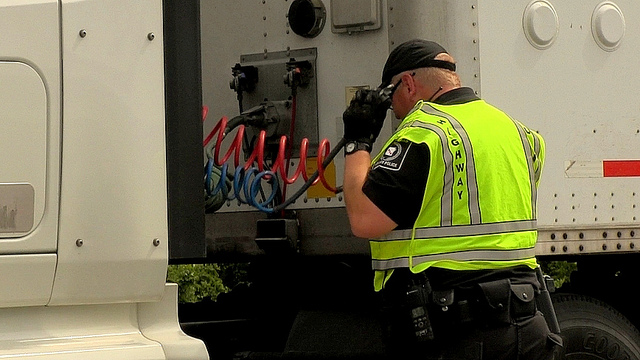Every year, member agencies of the Commercial Vehicle Safety Alliance (CVSA) conduct an important 72-hour enforcement blitz.
 This year’s “Roadcheck,” held June 3-5, consisted of 73,475 inspections, approximately two-thirds of which included inspecting the condition of the vehicle (in addition to examining the driver’s duty log, license, etc.).
This year’s “Roadcheck,” held June 3-5, consisted of 73,475 inspections, approximately two-thirds of which included inspecting the condition of the vehicle (in addition to examining the driver’s duty log, license, etc.).
This check of vehicle safety is effective for several reasons.
It Keeps People Safe
Any time a single unsafe vehicle is taken off the road, public safety is served. This year’s Roadcheck got more than 11,000 unsafe vehicles sidelined until they’re repaired—and that alone is reason enough to praise the campaign.
But the Roadcheck isn’t just about busting violators; it’s also for increasing safety awareness, which is essential in the effort to make the roads safer. Each Roadcheck serves to educate companies on how to be compliant with safety regulations, as well as reminding them of the consequences of noncompliance.
It Shows There’s Work to Be Done
Approximately one in four (23%) of the inspected vehicles had problems serious enough to take them out of service!
That’s pretty frightening for anyone out on the road. Most of us, whether we’re commercial or non-commercial drivers, see dozens or even hundreds of commercial vehicles on the road each day. It’s disconcerting to think that every fourth one is an accident waiting to happen.
Here’s another scary finding from the 2014 Roadcheck—5,738 inspections included checking for hazardous materials/dangerous goods compliance, and 16% of vehicles weren’t in compliance. Are you comfortable with 16% of vehicles transporting hazardous/dangerous loads not being compliant with safety regulations?
These numbers are too high—for the public, for drivers, and for businesses. They lead to injuries and costs that could be avoided.
It Reveals the Value of Inspections
Maybe I’m not cynical enough, but I think a very small percentage of companies willfully neglect vehicle safety for short-term reasons. In most cases, I think the violations occur because companies don’t know about vehicle problems.
This unawareness can be remedied with a strong internal inspection program. Consider a standard commercial vehicle inspection conducted by a compliance officer: it includes checking items such as the braking system, coupling devices, the exhaust system, the fuel system, lights, the steering mechanism, suspension, tires, wheels, rims, the trailer body, and safe loading. No company can possibly expect to be sufficiently aware of problems with all these items if they aren’t routinely self-inspecting them.
Regularly inspecting vehicles—using an inspection checklist such as The Checker to ease the process and prevent human error—enables a company to proactively take vehicles out of service for repair before they lead to injuries or fines.
Takeaway
Way to go CVSA! The annual Roadcheck is a tough, but necessary, reminder of the importance of commercial vehicle safety and the need for ongoing diligence and continual improvements.
Image courtesy of Arkansas Highways, Creative Commons.











